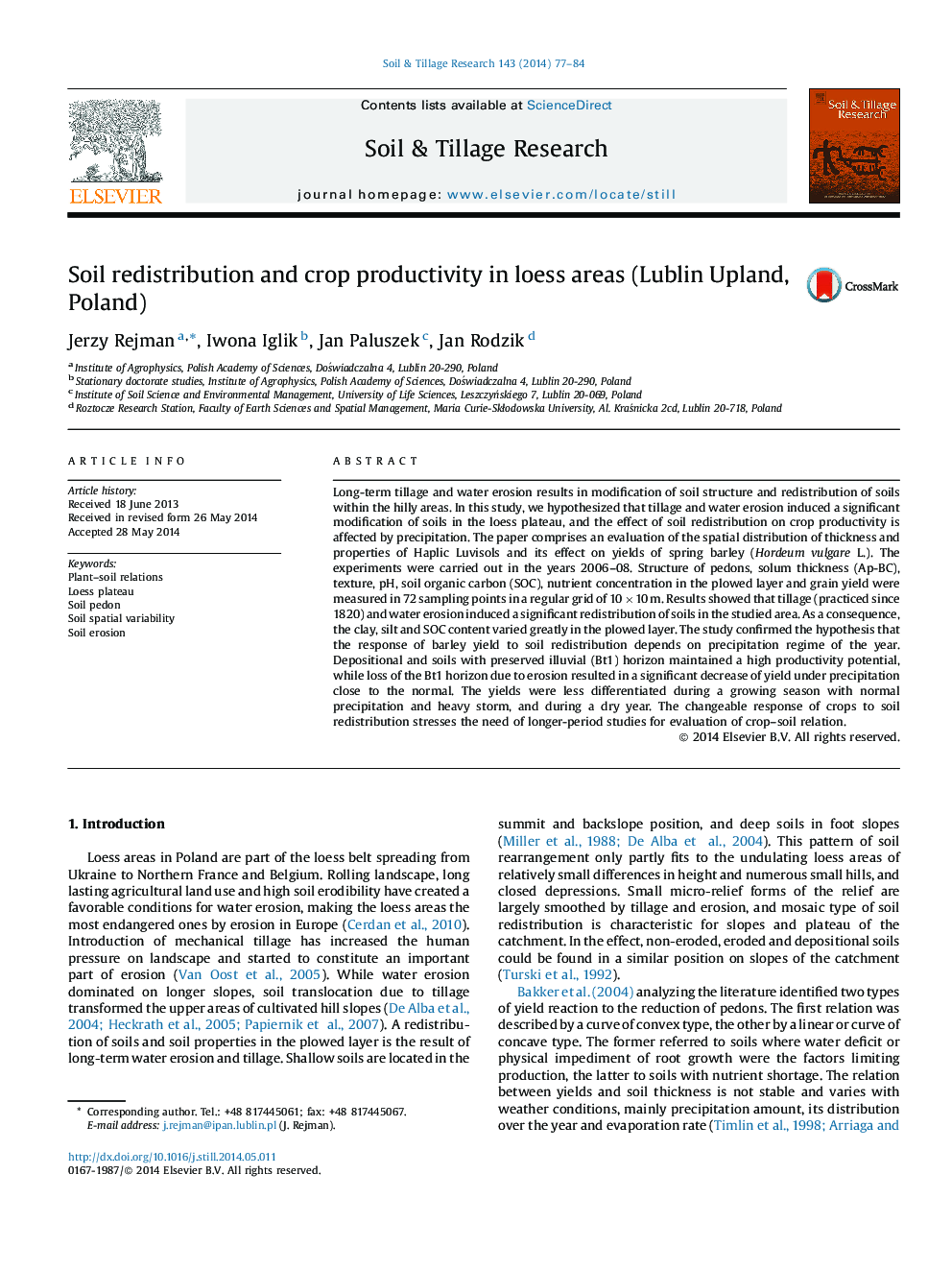| Article ID | Journal | Published Year | Pages | File Type |
|---|---|---|---|---|
| 305694 | Soil and Tillage Research | 2014 | 8 Pages |
•Tillage and erosion induced a significant redistribution of soil within the loess plateau.•Clay, silt and SOC content varied greatly in the plowed layer.•The significant effect of soil redistribution on yield was observed in the year with normal precipitation.•Depositional and soils with preserved Bt horizon characterized the largest productivity.
Long-term tillage and water erosion results in modification of soil structure and redistribution of soils within the hilly areas. In this study, we hypothesized that tillage and water erosion induced a significant modification of soils in the loess plateau, and the effect of soil redistribution on crop productivity is affected by precipitation. The paper comprises an evaluation of the spatial distribution of thickness and properties of Haplic Luvisols and its effect on yields of spring barley (Hordeum vulgare L.). The experiments were carried out in the years 2006–08. Structure of pedons, solum thickness (Ap-BC), texture, pH, soil organic carbon (SOC), nutrient concentration in the plowed layer and grain yield were measured in 72 sampling points in a regular grid of 10 × 10 m. Results showed that tillage (practiced since 1820) and water erosion induced a significant redistribution of soils in the studied area. As a consequence, the clay, silt and SOC content varied greatly in the plowed layer. The study confirmed the hypothesis that the response of barley yield to soil redistribution depends on precipitation regime of the year. Depositional and soils with preserved illuvial (Bt1) horizon maintained a high productivity potential, while loss of the Bt1 horizon due to erosion resulted in a significant decrease of yield under precipitation close to the normal. The yields were less differentiated during a growing season with normal precipitation and heavy storm, and during a dry year. The changeable response of crops to soil redistribution stresses the need of longer-period studies for evaluation of crop–soil relation.
Graphical abstractTillage (practiced since 1820) and water erosion induced a significant redistribution of soils in the studied area and large variation of clay and SOC content in the plowed layer.Figure optionsDownload full-size imageDownload as PowerPoint slide
